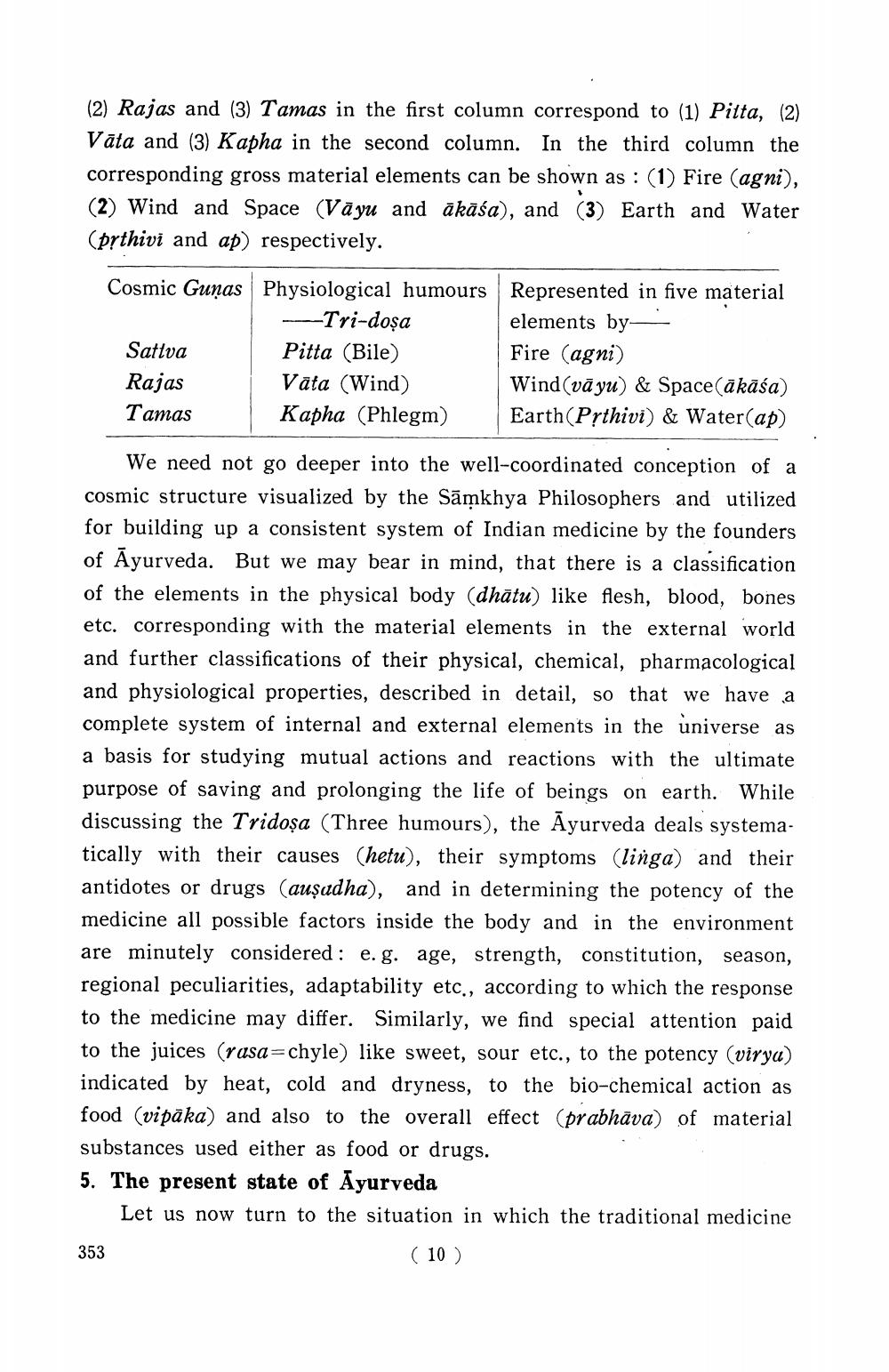________________
(2) Rajas and (3) Tamas in the first column correspond to (1) Pitta, (2) Vāta and (3) Kapha in the second column. In the third column the corresponding gross material elements can be shown as : (1) Fire (agni), (2) Wind and Space (Vāyu and ākāśa), and (3) Earth and Water (prthivi and ap) respectively.
Cosmic Guņas Physiological humours
----Tri-dosa Sattva
Pitta (Bile) Rajas
Vāta (Wind) Tamas Kapha (Phlegm)
Represented in five material elements byFire (agni) Wind (vāyu) & Space(ākāśa) Earth(Pịthivi) & Water(ap)
We need not go deeper into the well-coordinated conception of a cosmic structure visualized by the Sāmkhya Philosophers and utilized for building up a consistent system of Indian medicine by the founders of Ayurveda. But we may bear in mind, that there is a classification of the elements in the physical body (dhātu) like flesh, blood, bones etc. corresponding with the material elements in the external world and further classifications of their physical, chemical, pharmacological and physiological properties, described in detail, so that we have a complete system of internal and external elements in the universe as a basis for studying mutual actions and reactions with the ultimate purpose of saving and prolonging the life of beings on earth. While discussing the Tridosa (Three humours), the Ayurveda deals systematically with their causes (hetu), their symptoms (linga) and their antidotes or drugs (aușudha)and in determining the potency of the medicine all possible factors inside the body and in the environment are minutely considered : e. g. age, strength, constitution, season, regional peculiarities, adaptability etc., according to which the response to the medicine may differ. Similarly, we find special attention paid to the juices (rasa=chyle) like sweet, sour etc., to the potency (virya) indicated by heat, cold and dryness, to the bio-chemical action as food (vipāka) and also to the overall effect (prabhāva) of material substances used either as food or drugs. 5. The present state of Ayurveda
Let us now turn to the situation in which the traditional medicine 353
( 10 )




